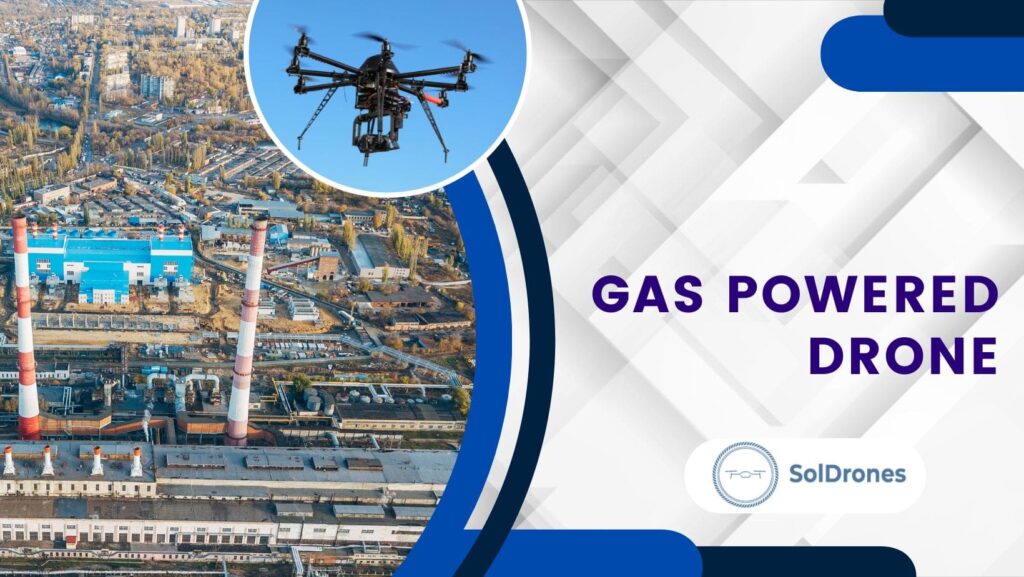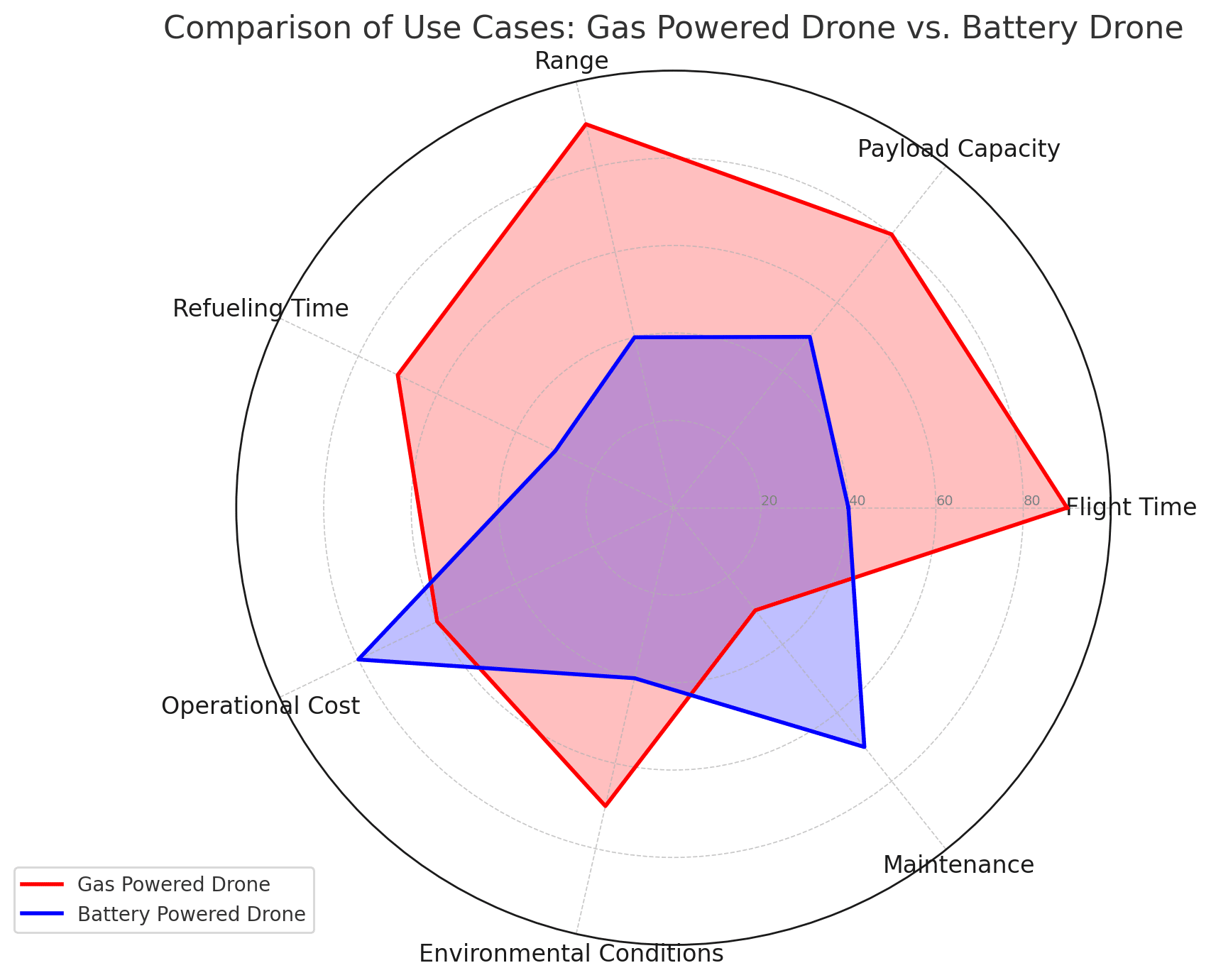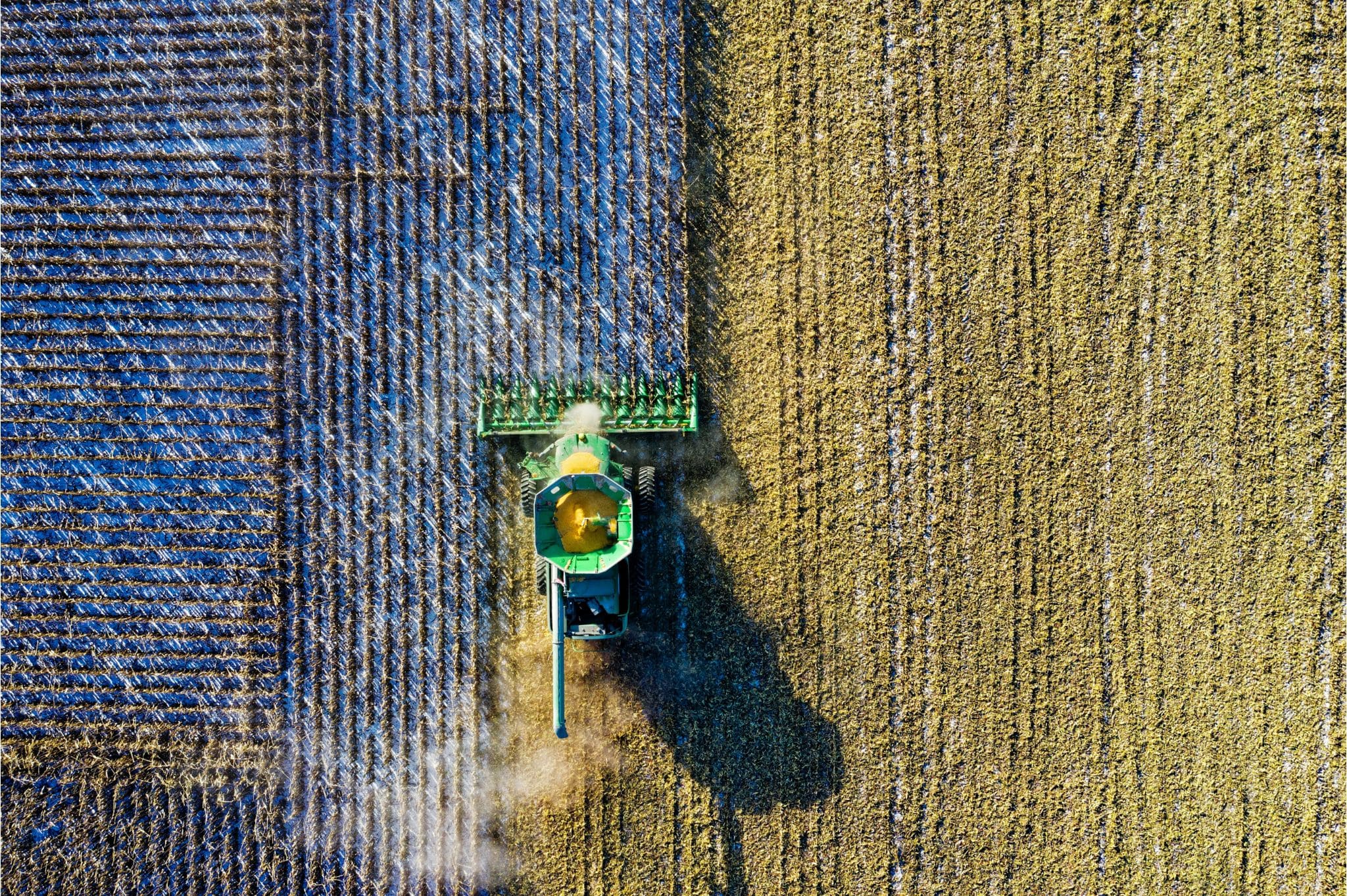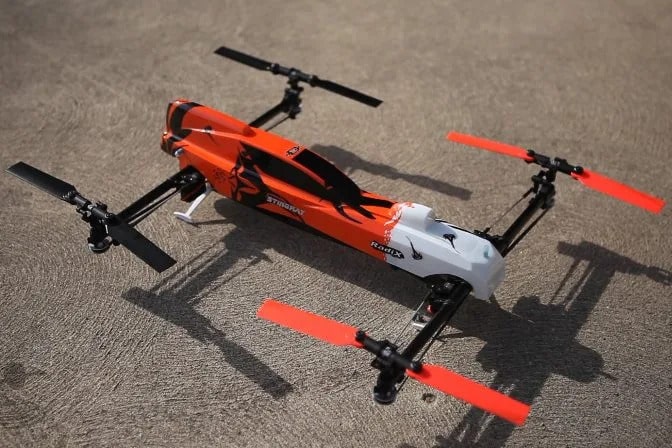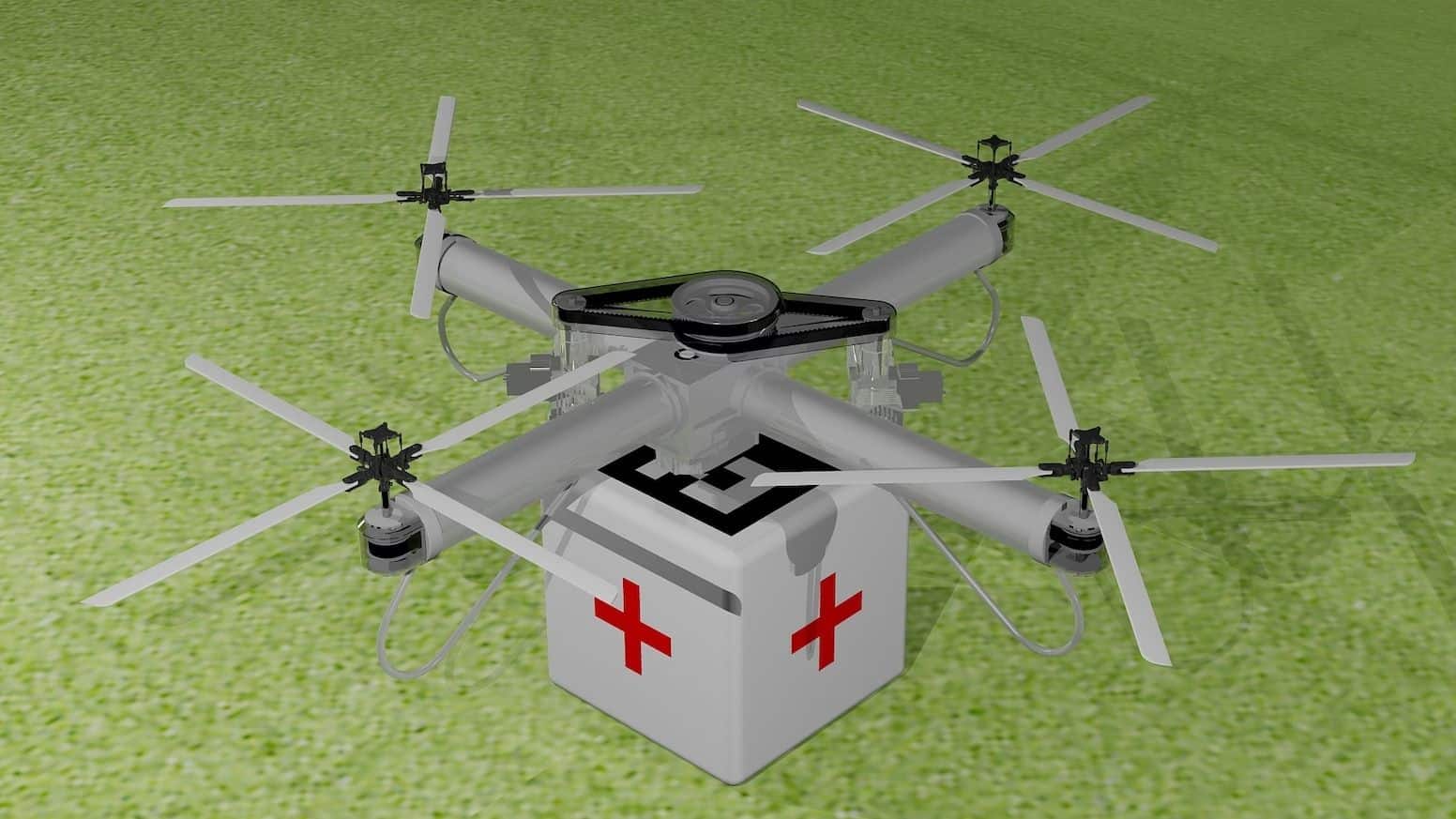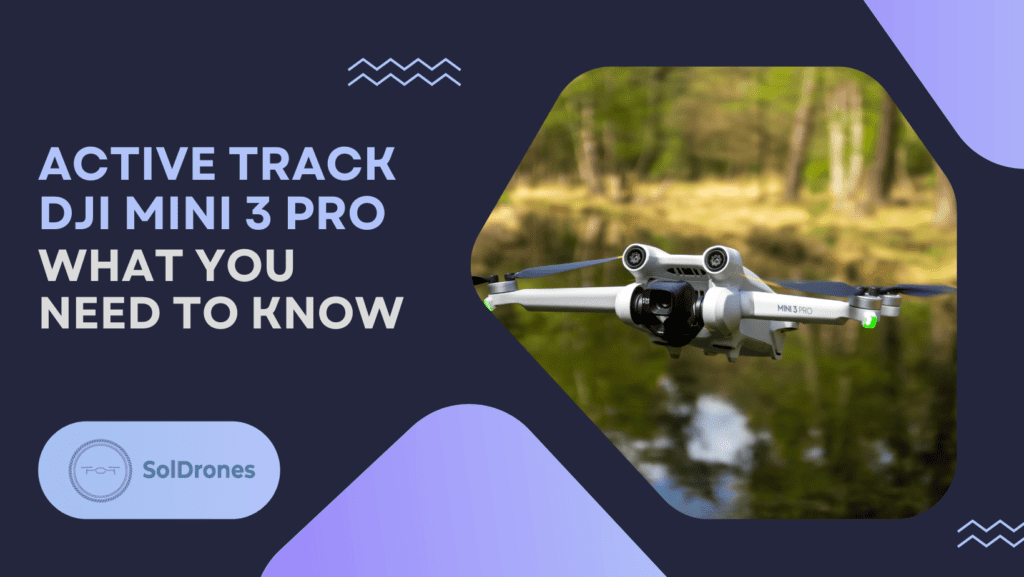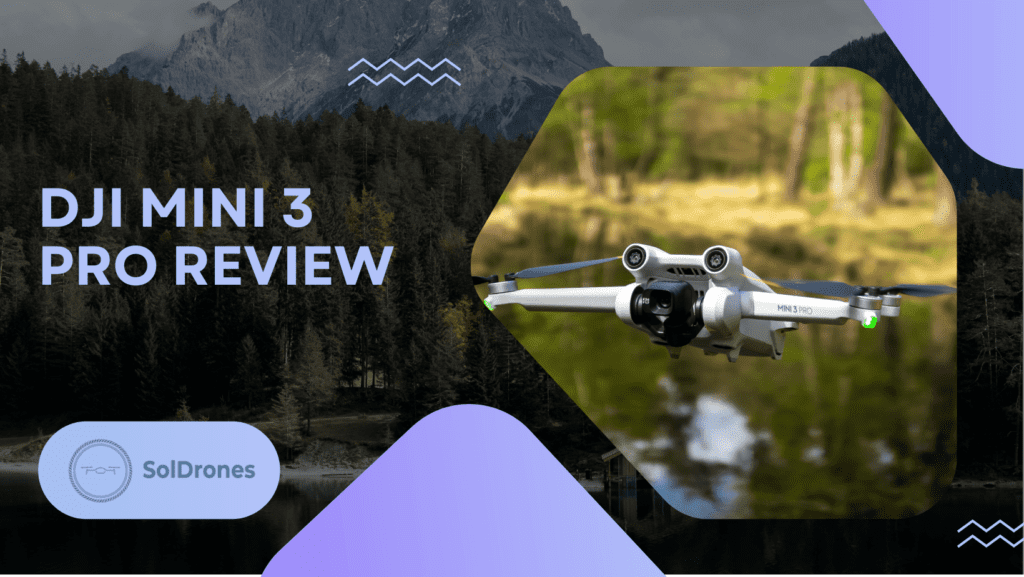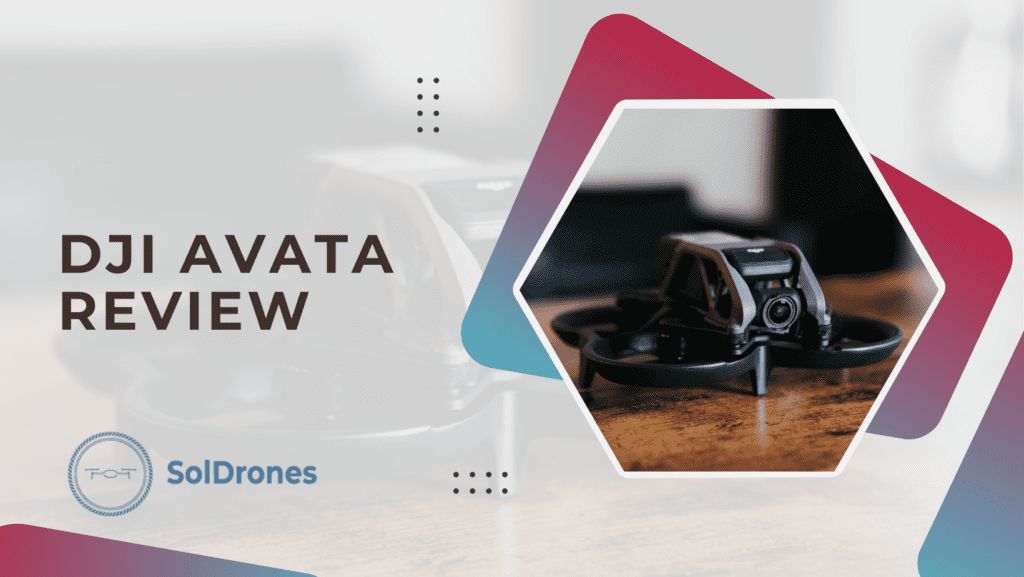While most drones run on rechargeable batteries, there are instances when drone professionals will want to use gas powered drones.
The high energy density that comes from gasoline is one core reason.
Also, waiting hours for batteries to recharge is just…annoying. Especially when you can refill a gas tank in minutes.
For those seeking to push the boundaries in industries like agriculture, surveillance, or large-scale mapping, gas-powered drones present a compelling solution.
Their ability to fly autonomously to remain in the sky for extended periods and carry heavier payloads with larger cameras is revolutionizing the drone landscape.
That being said, there are some key benefits of gas powered drones when compared to battery powered drones. Here’s a hypothetical diagram comparing the two types of drones:
If maximizing flight duration, payload capacity, refueling time, and range are on your agenda, it could be time to scope the key differences and advantages offered by gas-powered drones.
We got you covered in this guide.
Article Highlights
- Gas-powered drones offer extended flight times
- Common fuel types include gasoline, 2-stroke oil mix, methanol, diesel, and the military-grade JP-8.
- While electric drones dominate the consumer market, gas and hybrid drones excel in long-duration missions.
Obviously, this is a bit of an extreme example, but MIT did create a gas powered drone back in 2017 that’s capable of flying for 5 days on a single tank:
Video Credit: DIYguru
Now, let’s get into the article of what you really need to know.
What is a Gas-Powered Drone?
A gas-powered drone – sometimes referred to as an internal combustion engine (ICE) drone – is an unmanned aerial vehicle (UAV) that uses gasoline or another fuel for propulsion through an internal combustion engine rather than relying on electricity from batteries.
[Quoteblock: With these drones, gone are the days of a fuel cell waiting hours for recharging; many drones instead, refuel in minutes and take to the skies again.]
These drones typically offer longer flight durations and greater ranges than their electric counterparts, making them ideal for tasks requiring extended flight times.
However, they tend to be noisier and emit exhaust gases.
While electric drones are more common for consumer use, gas-powered drones are valuable for specific professional applications like agricultural surveys and pipeline inspections.
How Do Gas-Powered Drones Work?
A gas-powered drone operates on principles similar to other vehicles with internal combustion engines but on a smaller scale and adapted for both aerial photography and use.
Here’s a breakdown of how a gas-powered drone works:
Fuel Combustion
The primary component of a gas-powered drone is its internal combustion engine.
When the gas-powered drone helicopter’s engine is started, fuel (typically gasoline or a similar compound) is mixed with air in a combustion chamber.
Ignition
A spark plug provides enough energy for a spark to the electric motor that ignites this air-fuel mixture. The combustion of the fuel produces hot gases that expand rapidly.
Generating Thrust
This rapid expansion of gases pushes a piston, converting the chemical energy from the combustion into mechanical energy.
This power source’s automatic movement is then transferred to the drone’s propellers, causing them to spin and generate thrust, lifting the drone off the ground and propelling it forward.
Throttle Control
The drone’s throttle controls the amount of air and fuel entering the combustion chamber.
By adjusting the throttle, the operator can control the speed of the engine and, consequently, the drone’s altitude and velocity.
Stabilization and Direction
Gas-powered drones have multiple propellers (often four, making them quadcopters). By varying the speed of individual propellers, the drone can be steered in different directions.
Additionally, many modern drones have gyroscopes and other sensors to help stabilize the drone and make it easier to control.
Landing and Shutting Down
When it’s time to land, the throttle is reduced, decreasing the engine’s speed and the thrust produced. Once on the ground, the engine can be shut off, halting the combustion process.
Exhaust System
Like cars and other vehicles with internal combustion engines, gas-powered drones produce exhaust gases as a byproduct of the drone’s engine-burning fuel.
These drones are equipped with exhaust systems that expel these gases safely away from the drone’s sensitive components.
While the fundamental workings of a gas-powered drone’s engine are similar to those of other gas-powered vehicles, the intricacies of a gas-powered drone helicopter in various flight conditions require specialized components and controls to ensure stability, maneuverability, and safety in the air.
What are the Many Advantages of Gas-Powered Drones Over Electric Drones?
Gas-powered drones and battery-powered drones each have their own set of advantages, but when explicitly considering gas-powered drones, they offer several benefits over their electric counterparts:
Longer Flight Time
One of the most significant advantages of gas-powered drones is their extended flight duration. Because gasoline contains a higher energy density than batteries, gas-powered drones can typically fly continuously longer on a single tank of fuel than battery-powered aircraft can on a full battery charge.
Greater Range
Along with longer flight times, gas-powered drones usually have a greater operational range, making them ideal for tasks that cover large areas, such as agricultural surveys, mapping vast terrains, or long-range inspections compared to battery-powered drones.
Quick Refueling
Refilling a gas-powered drone’s fuel tank can be done in minutes, whereas recharging an electric drone’s battery can take much longer. This fast turnaround is especially beneficial for tasks that require continuous operation.
Maximum Payload Capacity
A gas-powered drone often has robust engines, allowing it to carry heavier payloads than electric drones of the same size. This can be crucial for applications like cargo delivery, the ability to carry larger cameras, or specialized equipment transport.
Better Performance in Cold Environments
Battery performance can degrade in cold temperatures, reducing flight times and power for electric drones. Gas-powered drones, on the other hand, are less affected by cold conditions, maintaining consistent performance.
Cost Over Time
While the upfront cost of gas-powered drones might be higher, the price of gasoline can be lower than electricity in some regions, potentially leading to lower operational costs over time, especially with frequent and prolonged use.
Mature Technology
Internal combustion engines have been around for a long time and are well-understood. This maturity means there’s a wealth of knowledge and infrastructure available for their maintenance and repair.
However, it’s essential to note that gas-powered drones have downsides, such as noise, emissions, and potential maintenance challenges.
The choice between gas-powered and electronic drones should be based on the specific requirements of the task and the operational preferences of most drones and the user.
Overall, gas-powered drones are a good option for applications where long flight times, heavy payloads, long-range, low maintenance, and low cost are essential.
However, they are more noisy potentially dangerous, and less environmentally friendly than electric drones.
Here are some examples of applications where gas-powered drones are commonly used:
- Inspection and surveying
- Search and rescue
- Agriculture
- Security and surveillance
Gas-powered drones are still a relatively new technology, but they are rapidly developing and becoming more affordable.
As a result, they are expected to play an increasingly important role in a wide range of industries in the coming years.
How Long Can Gas-Powered Drones Fly vs Battery-Powered Drones?
The flight time of gas-powered drones varies based on several factors, including the drone’s design, the size of a gasoline engine, its fuel tank, battery life, engine efficiency, the weight of powerful engines, the drone deliveries its payload, and the flying conditions.
However, in general, gas-powered drones can often outlast electronic drones in terms of flight duration due to the higher energy density of gasoline compared to batteries. Sure, MIT’s drone can fly 5 days on a single take, but we discuss more practical time insights below…
Typical Flight Times
A consumer-grade battery-powered drone has flight times ranging from 20 to 30 minutes on a full battery charge. In contrast, gas-powered drones can often fly for several hours on a single tank of fuel, depending on the factors mentioned above.
Examples:
- Small Gas-Powered Drones: These might achieve flight times of 1-2 hours, depending on their design and payload.
- Larger Professional Drones: Used in industries like agriculture or surveillance, they can have flight durations extending up to 2+ hours or even longer in some specialized cases.
Trade-offs
It’s important to note that while a larger fuel tank can allow for extended flight times, it also adds weight to the drone.
This additional weight can impact the drone’s maneuverability fast speed and ability to carry other heavier payloads too.
Hybrid Systems
Some drones combine gasoline engines with electric batteries in a hybrid system. These drones can use the power source of a gas engine for primary propulsion and the battery for additional power or specific tasks, potentially with fuel systems extending flight times even further.
To get specific flight time information for a particular gas-powered drone, it’s best to refer to the manufacturer’s specifications or product data-sheet.
However, in general terms, the extended flight times achievable with gas-powered propulsion are one of the main reasons specific industries opt for them over electric drones.
What Type of Fuel Do Gas-Powered Drones Use?
Gas-powered drones typically use fuels similar to other combustion engines, but the exact type can vary based on the drone’s engine design and intended use.
Here are the most common types of fuel used in gas-powered drones:
- Gasoline-Powered Drone: This is the most common type of fuel used in many gas-powered drones, especially those with two-stroke engines. It’s the same fuel that cars use, making it readily available.
- 2-Stroke Oil Mix: Drones with two-stroke engines often require gasoline and 2-stroke oil. The oil helps lubricate the machine during operation. It’s crucial to mix the oil and gasoline in the correct ratio as specified by the drone’s manufacturer to ensure proper performance and longevity of the engine.
- Methanol-based Fuels: Some specialized drones, especially those used in racing or specific industrial applications, might use methanol-based fuels. These can sometimes offer higher performance but might be less readily available than regular gasoline.
- Diesel: While less common, drones are designed to run on diesel fuel, significantly larger drones are used for specific industrial applications.
- JP-8: Most military drones gas-powered or high-end industrial drones are designed to run on JP-8, a type of jet fuel. This is because JP-8 is the standard fuel used by the U.S. military and offers specific advantages in terms of storage and combustion properties in military drones.
- Hybrid Fuels: Some drones use hybrid systems that combine gasoline or another fuel with electric power. These drones can switch between or simultaneously use both power sources, optimizing performance and flight time.
Operators need to use the recommended fuel type for their specific drone model. Using the wrong fuel or incorrect mixture ratios can reduce performance, potential engine damage, and safety issues.
Always refer to the drone’s manual or manufacturer’s guidelines when selecting and preparing fuel.
What are the Best Gas-Powered Drones?
Two top gas powered drones on today’s market are the Nitro Stingray and the Incredible HLQ.
The Nitro Stingray is a quadcopter designed primarily for fun flying and racing. It has a two-stroke engine and is noted for its airframe, which combines a 490mm span with 110mm blades on a frame that’s 85% carbon and metal.
The Incredible HLQ (Heavy Lift Quadcopter) boasts two 12.5hp two-stroke hobby motors and large 435mm rotor blades on a quadcopter measuring roughly 40 inches in length, aiming for both power and maneuverability. This model started as a Kickstarter campaign and is particularly designed for drone deliveries, demonstrating the potential utility of gas-powered drones in cargo transport.
As the technology matures, such drones may become more accessible to a wider range of users, from hobbyists to commercial operators.
Where Can I Buy Gasoline Powered Drones, Parts, and Accessories?
If you’re looking to purchase gas-powered drone parts and accessories, several avenues can be explored:
- Specialized Drone Retailers: Many online and physical stores specialize in drone equipment.
- Manufacturer Websites: If you have a specific brand in mind, visit the manufacturer’s official website. Brands like Yamaha, for instance, offer parts and accessories for their gas-powered drone models.
- Online Marketplaces: Websites like Amazon, eBay, and Alibaba often list drone parts and accessories from various sellers. Ensure you’re purchasing from reputable sellers, and always check the parts’ compatibility with your drone model.
- Local Hobby Shops: Many towns and cities have hobby shops that cater to gas-powered RC drone enthusiasts. These stores may carry parts and accessories for gas-powered drones, or they can order them for you.
- Drone Forums and Communities: Joining forums like RCGroups, DroneVibes, or other specialized communities can be beneficial. Members often buy, sell, or trade parts and can recommend where to find specific components.
- Trade Shows and Expos: Attending drone or RC-related trade shows can be an excellent opportunity to find parts and accessories, meet suppliers, and learn about the latest gas-powered drone technology.
- Custom Machining and Fabrication: If you need a part that’s difficult to find or want a customized component, consider approaching workshops that offer custom machining or fabrication services. They can produce the part you need based on specifications or samples.
When purchasing parts and accessories, always ensure they’re compatible with your drone model.
If unsure, consulting the drone’s manual, the manufacturer’s customer service or seeking advice from experienced users in forums or local communities can be helpful.
What Happens if a Gas-Powered Drone Runs Out of Fuel Mid-Flight?
If a gas-powered drone runs out of fuel mid-flight, it will lose power and begin to descend.
The gas-powered drone helicopter’s flight controller will attempt to maintain a controlled descent, but it will eventually crash if it cannot reach a safe landing zone.
The distance that a gas-powered drone can glide after running out of fuel depends on several factors, including the drone’s weight, aerodynamic profile, and wind conditions.
However, most gas-powered drones can glide for at least a few hundred feet, and some models can fly over a mile.
There are a few things that drone pilots can do to minimize the risk of a crash if their drone runs out of fuel mid-flight:
- Be aware of the drone’s fuel level and flight time: Drone pilots should constantly monitor their drone’s fuel level and flight time. They should also be familiar with the drone’s glide ratio to estimate how far it can glide if it runs out of fuel.
- Plan the flight path carefully: Drone pilots should plan their flight path carefully so that they are always within gliding distance of a safe landing zone. They should avoid flying over areas that would be difficult or dangerous to land, such as water, dense forests, and urban areas. They increase the chances of compromising flight performance.
- Use an auto-land feature: Many gas-powered drones have an auto-land part that can land the drone safely during a fuel outage. Drone pilots should enable this feature and familiarize themselves with it before flying.
Even if the drone pilot takes all necessary precautions, there is still a risk of a crash if a gas-powered drone runs out of fuel mid-flight.
Therefore, it is important to have drone insurance to protect yourself from financial losses.
Here are some additional tips for flying gas-powered drones safely:
- Always fly in line of sight and keep the drone safe.
- Be aware of your surroundings and avoid flying near obstacles or people.
- Obey all local laws and regulations regarding drone flight.
Final Thoughts
Gas-powered drones offer a unique set of advantages over their electric counterparts, particularly in terms of extended flight duration and range.
These fixed-wing drones harness the high energy density of gasoline to meet the demands of specialized applications like agriculture, long-range surveillance, and industrial inspections.
However, as with all technologies, they come with trade-offs, including noise and emissions.
As the drone industry evolves, gas-powered drones will undoubtedly find their niche in specific sectors, balancing their strengths against the broader backdrop of electric drone advancements.
FAQs
Are gas-powered delivery drones more environmentally friendly?
Gas-powered drones emit exhaust gases, so they’re not as environmentally friendly as electric drones.
However, increased power output can be more efficient for tasks requiring extended flight times, reducing the chances of vertical takeoff and landing.
How do gasoline drones handle cold and windy weather?
Gas-powered drones tend to be more reliable in cold conditions compared to battery drones since battery performance can degrade in low temperatures.
Are gas-powered drones legal to operate?
Regulations for flying drones vary by country and region.
It’s essential to check local rules, but generally, if you’re adhering to UAV regulations for electric drones, similar rules apply to gas-powered and battery-powered ones.
Some additional restrictions might concern noise levels or emissions.
How do I maintain a gas-powered drone?
Regular maintenance includes checking the engine, ensuring proper fuel mixtures, cleaning or replacing spark plugs, and inspecting for wear and tear.
Always refer to the manufacturer’s guidelines for detailed maintenance procedures.
Are gas-powered drones suitable for beginners?
Due to their mechanical complexity and the challenges of handling all their fuel and systems, gas-powered drones might be better suited for experienced operators or those familiar with combustion engines.

